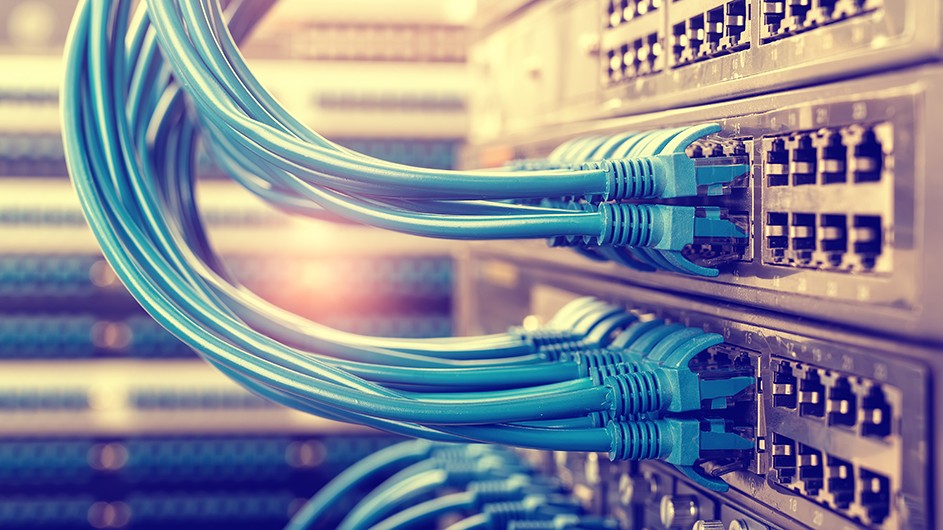Bringing High-speed Internet to More Americans
Columbia Engineering professor Henning Schulzrinne unpacks President Biden’s $1 trillion infrastructure bill and its promise to expand broadband access for people in rural and low-income areas.

As many as 42 million Americans lack access to high-speed internet, a problem that gained new urgency during the pandemic as people in rural areas and lower-income city neighborhoods struggled to connect to offices and classrooms by video.
“Broadband is as essential to any community as clean water or reliable electricity, and needs to be treated that way,” said Henning Schulzrinne, a computer science professor at Columbia Engineering and a former chief technology officer with the U.S. Federal Communications Commission (FCC) under President Barack Obama.

The infrastructure bill signed into law by President Joe Biden includes $65 billion to improve internet service for families in cities, rural areas, and on tribal lands, with most of the money going to the states as grants. Will it be enough?
In a recent report to the U.S. National Science Foundation, Schulzrinne outlined the obstacles standing in the way of universal access to high-speed internet. Barriers include a lack of detailed maps showing where access is poor, nonexistent, or unaffordable, and disincentives for companies to build out networks in unprofitable areas. Columbia News spoke with Schulzrinne to understand the bill’s pros and cons.
Q. Can you start first by defining broadband? When we connect to Wi-Fi at home is that broadband?
A. Broadband is the term policymakers use for high-speed internet at home. Under FCC regulations, broadband must have download speeds of at least 25 megabits per second and upload speeds of at least 3 megabits per second to be considered broadband. Most households get broadband service via their phone or cable companies, and indeed, most internet service at home is provided via Wi-Fi.
Q. Why is universal broadband so critical?
A. Uneven access to broadband is fundamentally unfair. All kinds of day-to-day activities, from applying to jobs to tracking kids’ performance in school, become much more difficult without it. The pandemic made this problem more visible and probably renewed efforts to tackle it at a larger scale.
The benefits are compelling. Education and training for adults looking to gain new skills will become easier. Access to specialists and mental health providers in rural areas will improve. Rural areas near a major city may be able to attract younger residents who can now work from home at least part of the time. Many small businesses need reliable, high-speed internet to offer goods and services. That said, broadband is no magic bullet. It won’t guarantee access to high-quality education, health care, and public services on its own.
Q. How did you get interested in broadband access, and what’s one underappreciated aspect of the problem?
A core part of the FCC’s mission is to bring broadband to everyone. I worked for the FCC on and off from 2010, when the first national broadband plan was published, to 2017. Then, as now, the FCC and other federal agencies have tried to fill the gaps in coverage. One issue that’s been largely ignored is how many families can’t afford broadband even when it’s available where they live.
Q. How many people lack access to high-speed internet?
A. The data are conflicted, and underreporting is a major problem. In a 2020 report, the FCC estimated that the number of Americans without broadband fell from 21.3 million to 14.5 million from the year before. But a research group, BroadbandNow, has cross-checked those data against "check availability" tools offered by top internet providers and put the number at 42 million.
Q. How far does the United States lag other developed countries?
A. Almost all large countries struggle with bringing high-speed broadband to rural areas, but greater competition in many countries has helped to bring prices down. The U.S. has the highest household disposable income among countries in the Organization for Economic Cooperation and Development (OECD), but we rank 21stout of 29 OECD countries on broadband cost and 13th globally on average speed.
Q. How do people in rural areas connect to the internet?
A. Most rural areas are still using older phone-line technology known as digital subscriber lines, or DSL, which can be slow. Connections are often overloaded and unreliable. Just two thirds of rural families have access to internet speeds faster than 100 megabits per second, which is the standard for cities. The reasons vary. Cable companies provide most high-speed broadband, but have largely avoided rural areas. Telephone companies have chosen not to upgrade phone lines to fiber optic technology. And since houses are further apart and disposable incomes lower, the rural market is viewed as less profitable. Federal subsidies to promote broadband expansion have often subsidized outdated technology.
Q. The bill includes $1 billion to build out “middle-mile” networks. How will this help?
A. Internet infrastructure can be divided into the backbone network connecting major cities, regional middle-mile networks linking cities to towns, and last-mile networks connecting to homes. Many smaller communities lack good fiber connections, or have only one expensive provider. Adding more middle-mile networks can stimulate competition by allowing smaller companies to build their own fiber networks.
Q. The bill includes nearly $3 billion to address digital redlining, a practice of charging customers in lower-income, minority neighborhoods more for inferior, lower-speed service. Why does this happen and how will the bill help?
A. Broadband providers and competitors often avoid upgrading or building out in lower-income neighborhoods because it’s less profitable. It’s not clear yet what kind of projects the bill will fund, but one idea is to offer free Wi-Fi in lower-income apartment buildings.
Q. Will the bill address any of the systemic problems outlined in your NSF Broadband Research Report?
A. Partly, yes. One of the recommendations in our report was to measure and address broadband availability and affordability, and the bill provides for this. However, many of our recommendations focused on research, like making sure that programs are effective and reach the right people. Our report recommends for example that all broadband agencies gather and release data as programs are launched so we can learn from what worked. Fortunately, a section of the bill calls for evaluating state digital equity programs. But other parts of the broadband effort could benefit from much more scrutiny.
Q. Will the bill really move us closer to universal broadband?
A. It really is the first large-scale, comprehensive attempt to make broadband more available and affordable. It’s a visionary step towards digital inclusion. My main concern is implementation and coordination. For example, the bill relies on the private sector to deploy broadband, but doesn’t force companies to build out everywhere or use the best long-term technology. Grants are made to states that may not have the capacity to ensure that new networks will meet local broadband needs 20 years from now. We want to avoid spending billions of taxpayer dollars another decade from now. Finally, since the states will be driving implementation, it will be difficult to monitor and evaluate the build-out and digital inclusion efforts. My research group is currently trying to analyze much smaller FCC subsidy programs and finding it quite difficult to measure impact.